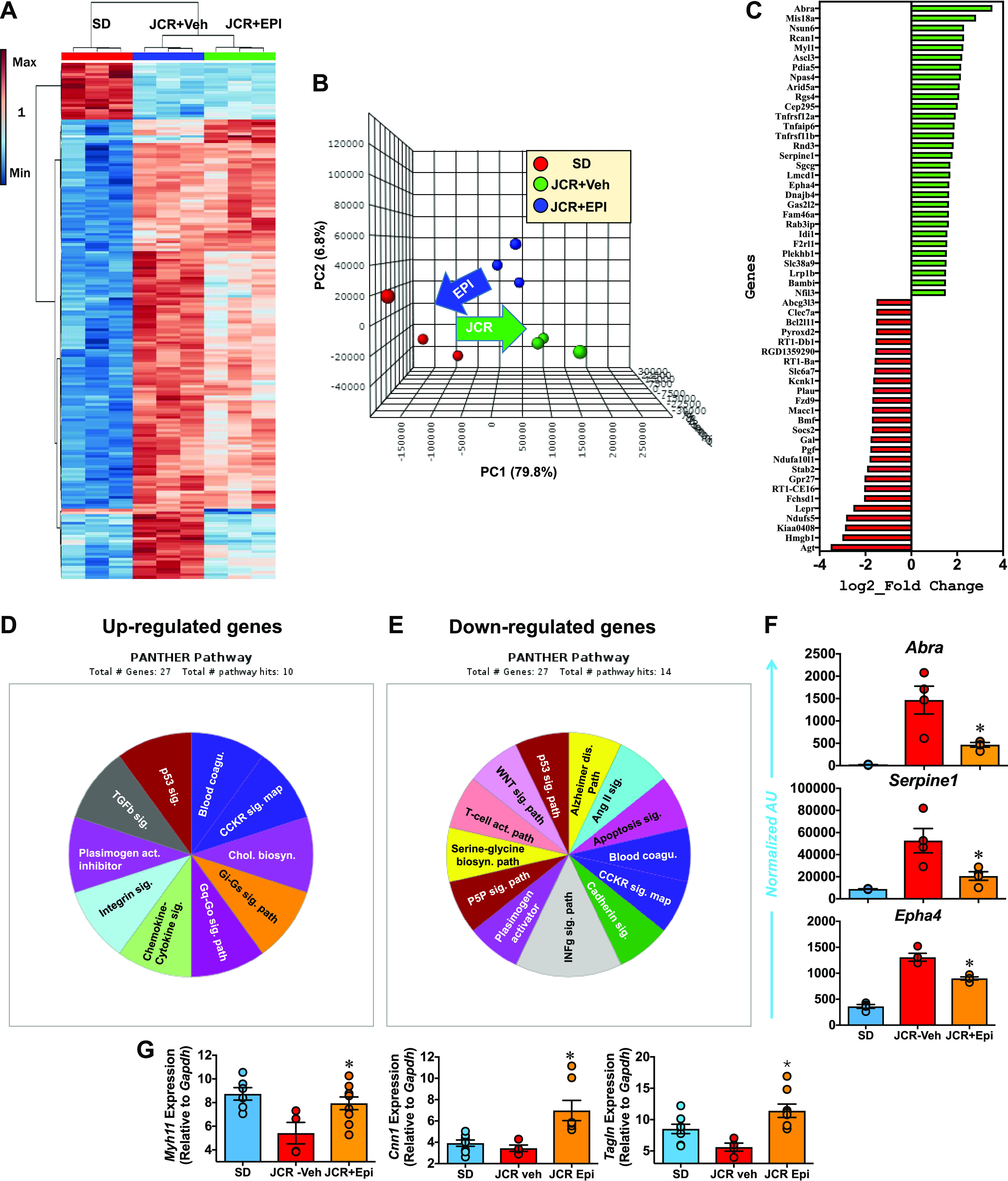Figure 5.

Epiandrosterone (EPI) decreases gene expression in aortas from JCR rats. A and B: heat map produced through whole genome RNA sequencing (RNA-seq) analysis and next-generation sequencing (NGS) and principal component (PC) analyses reveal that differences between the aortic transcriptomes of JCR and Sprague-Dawley (SD) rats are decreased by treating JCR rats with the G6PD inhibitor EPI (30 mg/kg/day) (n = 3 samples in each group). C: in aorta of JCR vs. SD rats, 30 genes are increased and 26 genes are decreased >1.5 log2_fold [false discovery rate (FDR < 0.05). D and E: Gene Ontology (GO) analysis annotation of increased and decreased genes revealed in blood coagulation and signaling pathways that affect contractile functions of smooth muscle cells (SMCs) are altered. F: RNA-seq analysis showing that aortic expression of Abra, Serpine1, and Epha4 was lower in JCR rats treated with EPI (30 mg/kg/day; n = 3 samples) than JCR-Veh control rats (n = 4 samples) but not SD rats (n = 3 samples). AU, arbitrary units. G: RT-PCR data showing that expression of Myh11, Cnn1, and Tagln (SD, n = 5 samples; JCR-veh, n = 3 samples; JCR+Epi, n = 8 samples) was increased by EPI treatment. RT-PCR data were normalized to the expression levels of Gapdh. *P < 0.05 vs. JCR-Veh.
